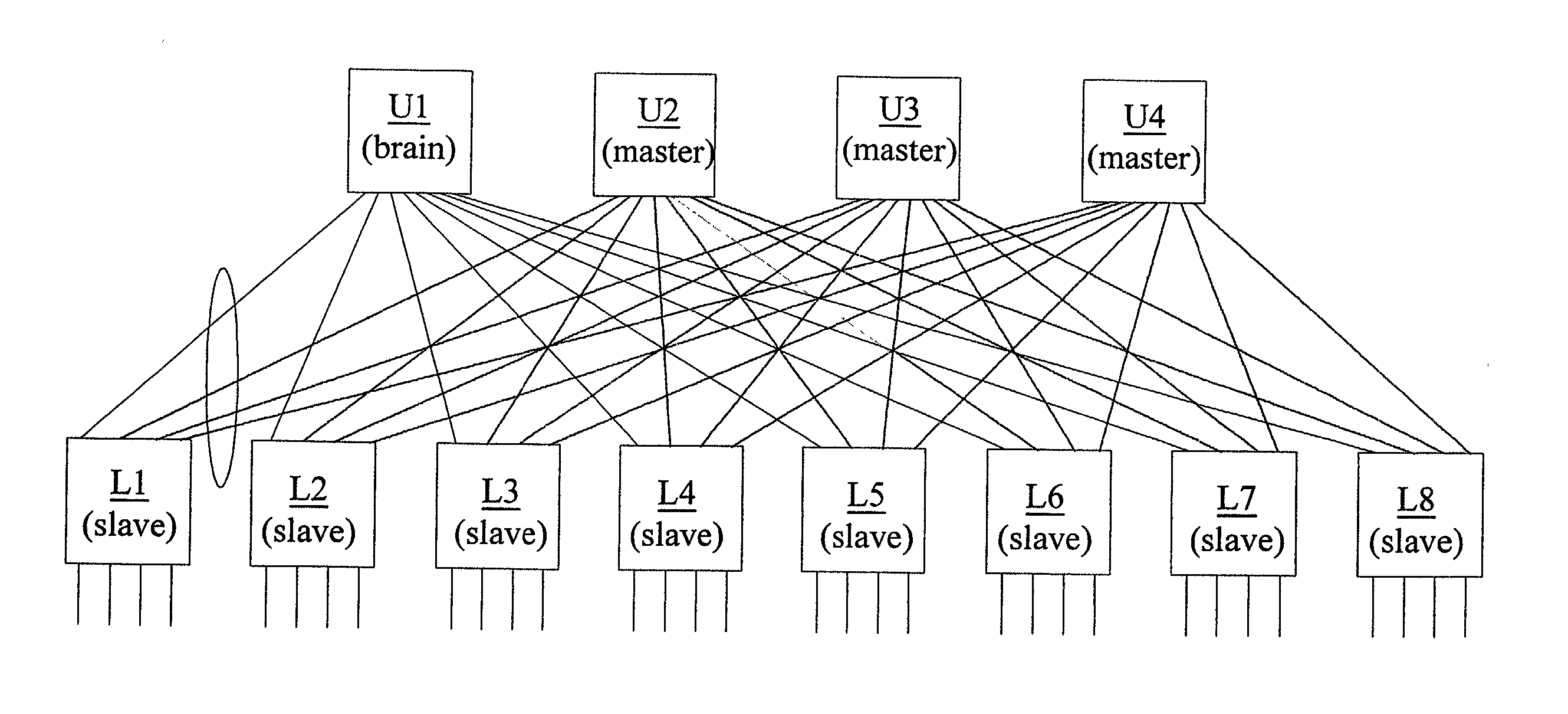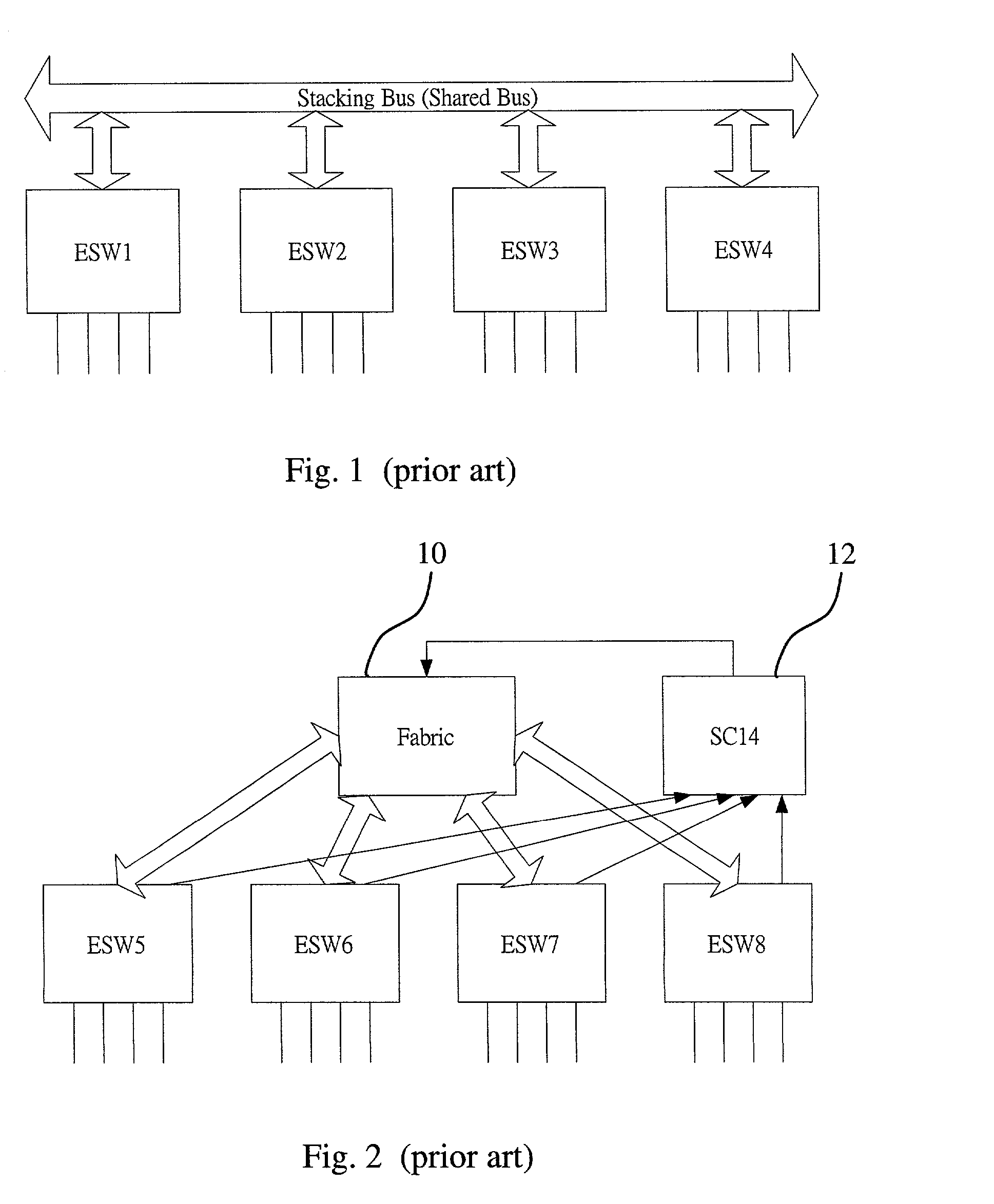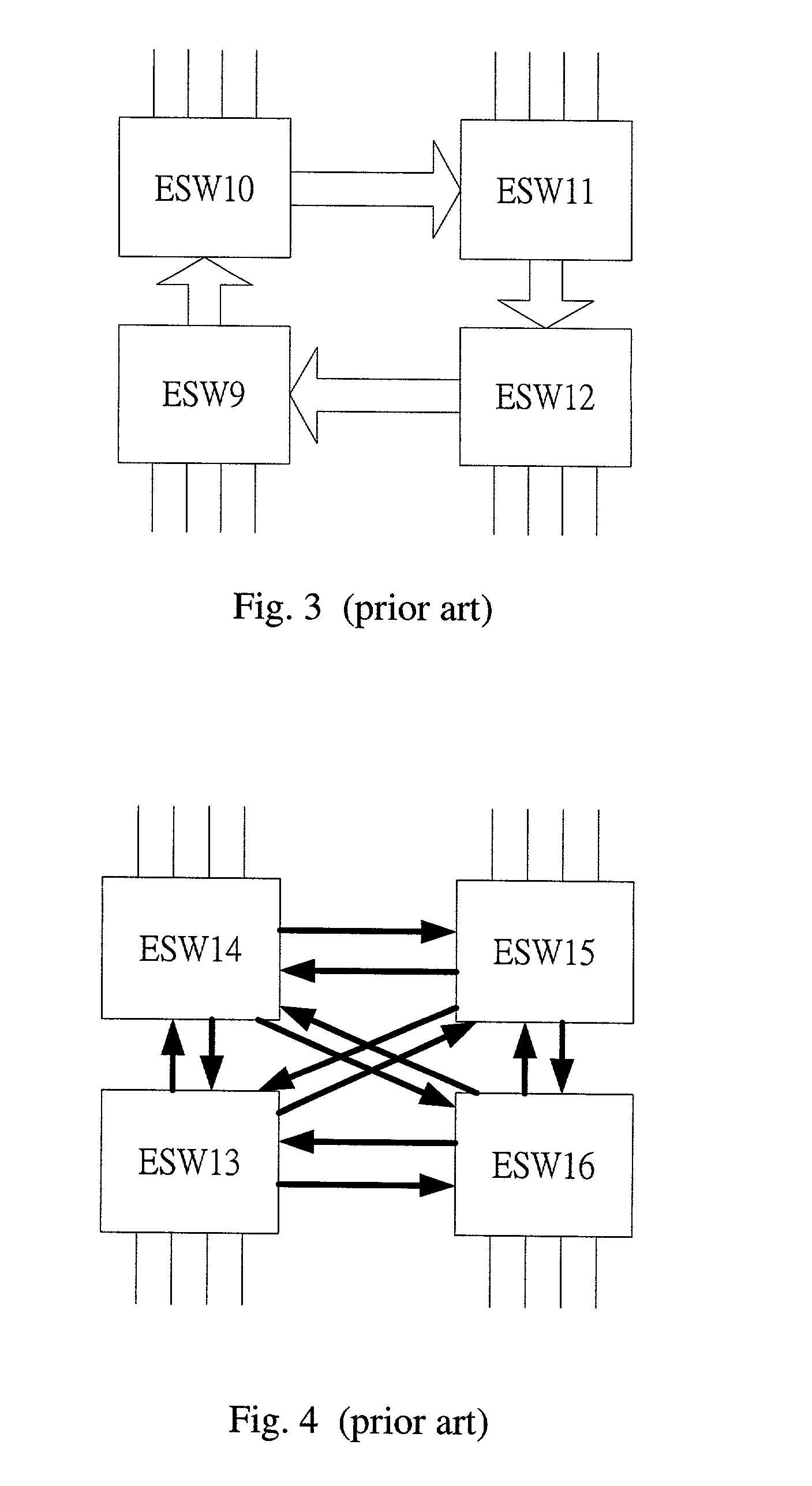System and method of stacking network switches
a network switch and network switch technology, applied in the field of systems and methods for stacking network switches, can solve the problems of limiting the system expansion, requiring repetitive access to a significant amount of centralized shared memory, and substantial development time and production costs
- Summary
- Abstract
- Description
- Claims
- Application Information
AI Technical Summary
Problems solved by technology
Method used
Image
Examples
Embodiment Construction
[0001] 1. Field of the Invention
[0002] This invention pertains in general to systems and methods for stacking network switches, and more particularly, to systems and methods for stacking network switches with forwarding database synchronization.
[0003] 2. Background of the Invention
[0004] A network system generally provides the exchange of information among multiple ends. Taking a computer network system as an example, the system provides the exchange of information among multiple nodes or segments. Each node or segment may contain one or more terminals, which may be a server, personal computer ("PC"), input device, or output device, such as a printer or plotter. In general, network switches manage and regulate traffic among the nodes or segments of a network system to enable efficient exchange of data and reduce network traffic congestion by directing packets to their designated destinations.
[0005] In an Ethernet network system, an Ethernet switch integrated circuit ("IC") is an App...
PUM
 Login to View More
Login to View More Abstract
Description
Claims
Application Information
 Login to View More
Login to View More - R&D
- Intellectual Property
- Life Sciences
- Materials
- Tech Scout
- Unparalleled Data Quality
- Higher Quality Content
- 60% Fewer Hallucinations
Browse by: Latest US Patents, China's latest patents, Technical Efficacy Thesaurus, Application Domain, Technology Topic, Popular Technical Reports.
© 2025 PatSnap. All rights reserved.Legal|Privacy policy|Modern Slavery Act Transparency Statement|Sitemap|About US| Contact US: help@patsnap.com



